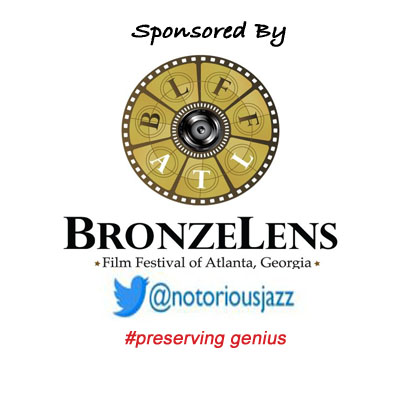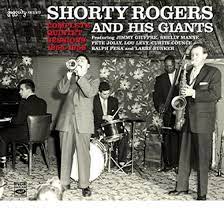
Daily Dose Of Jazz…
Lawrence Benjamin Bunker was born November 4, 1928 in Long Beach, California. At first he played primarily drums, but increasingly he focused on vibraphone. He was later highly regarded for his playing of timpani and various percussion instruments.
Bunker is a dependable and in-demand studio drummer and vibist who achieved distinction recording with Billie Holiday, Ella Fitzgerald, Peggy Lee, Diana Krall, and many other jazz greats. In 1952, he was the drummer in one of Art Pepper’s first groups. The next two years he played drums in some of the earliest of Gerry Mulligan’s groups.
In the 1950s and 1960s he appeared at Howard Rumsey’s Lighthouse in Hermosa Beach, and performed with Shorty Rogers and His Giants and others. The Sixties had him intermittently drumming in the Bill Evans trio and played timpani with the Los Angeles Philharmonic orchestra.
His work in movie soundtracks spanned over fifty years, from Stalag 17 in 1953 and Glengarry Glen Ross in ‘92) to The Incredibles in 2004. Larry’s work included soundtracks by John Williams, Henry Mancini, Quincy Jones, Miklós Rózsa, Jerry Goldsmith, Johnny Mandel, Lalo Schifrin and many other composers.
Drummer, vibraphonist, and percussionist Larry Bunker, who was a central figure on the West Coast jazz scene, transitioned from complications of a stroke in Los Angeles, California at age 76 on March 8, 2005.
More Posts: bandleader,drums,history,instrumental,jazz,music,percussion,timpani,vibraphone
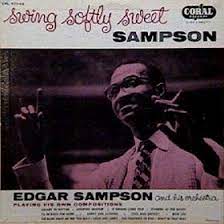
Daily Dose Of Jazz…
Edgar Melvin Sampson was born on October 31, 1907 in New York City, New York. He began playing violin aged six and picked up the saxophone in high school, then started his professional career in 1924 in a violin piano duo with Joe Colman. Through the rest of the 1920s and early 1930s, he played with many big bands, including those of Charlie “Fess” Johnson, Duke Ellington, Rex Stewart and Fletcher Henderson.
In 1934, Sampson joined the Chick Webb outfit and during his period he created his most enduring work as a composer, writing Stompin’ at the Savoy and Don’t Be That Way. Leaving Webb in 1936, his reputation as a composer and arranger led to freelance work with Benny Goodman, Artie Shaw, Red Norvo, Teddy Hill, Teddy Wilson and Webb.
Becoming a student of the Schillinger System in the early 1940s, Edgar continued to play saxophone through the late 1940s and started his own band at the end of the decade. He worked with Latin performers such as Marcelino Guerra, Tito Rodríguez and Tito Puente as an arranger.
He recorded one album under his own name, Swing Softly Sweet Sampson, in 1956. Due to illness, he stopped working in the late Sixties. Composer, arranger, saxophonist, and violinist Edgar Sampson, nicknamed The Lamb, transitioned on January 16, 1973.
More Posts: arranger,bandleader,composer,history,instrumental,jazz,music,saxophone,violin
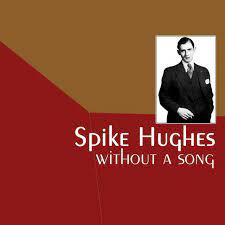
Daily Dose Of Jazz…
Patrick Cairns “Spike” Hughes was born October 19, 1908 in London, England and spent his childhood mostly with his mother, a psychiatrist who was involved in extensive travel in France and Italy, as well as a more settled period of education at Perse School in Cambridge. By 1923 when he was 15 he spent an extended period in Vienna, Austria studying composition with Egon Wellesz.
He began writing his first music criticism for The Times of London and heard his first jazz at the Weinberg Bar, Weihburggasse, a band led by trumpeter Arthur Briggs. Returning to the UK in 1926, Hughes had a solo cello sonata performed in London and wrote the incidental music for two theatre productions in Cambridge.
His interest in jazz was stimulated by the London revue Blackbirds, starring Florence Mills and Edith Wilson in 1926. It was an enthusiasm he shared with his friends, the composers Constant Lambert and William Walton and the conductor Hyam Greenbaum. He taught himself double bass using a German string bass made of tin, the spike of which led to his nickname. He formed his own jazz group in 1930 and was one of the earliest artists signed to Decca Records in England and recorded over 30 sessions between 1930 and 1933.
Originally billed as Spike Hughes and his Decca-Dents, but it was changed either to his Dance Orchestra or Three Blind Mice for smaller sessions. From 1931, he played regularly with the Jack Hylton Band and his career in jazz culminated in 1933 with a visit to New York, where he arranged three recording sessions involving members of Benny Carter’s and Luis Russell’s orchestras with Coleman Hawkins and Henry “Red” Allen from Fletcher Henderson’s band.
After the New York recordings, Spike ceased performing jazz and orchestrated and conducted shows for C B Cochran and using the pseudonym Mike wrote jazz reviews for Melody Maker, Daily Herald and The Times from 19531 to 1967. He established performance and recording opportunities for American bands in England.
He wrote radio plays accompanied by his own musical scores for the BBC, writing and broadcasting, conducting the BBC Theatre Orchestra, and for BBC Television. As a writer, regular BBC broadcaster and critic his subjects also included food and travel. He wrote sixteen composition, five film scores, fifteen books and recorded four albums,
Composer, arranger and double bassist Spike Hughes, who became better known as a broadcaster and humorous author, transitioned on February 2, 1987.
More Posts: bandleader,bass,history,instrumental,jazz,music
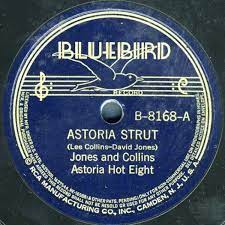
Daily Dose Of Jazz…
Leeds “Lee” Collins was born on October 17, 1901 in New Orleans, Louisiana. As a teenager he played in brass bands, including the Young Eagles, the Columbia Band, and the Tuxedo Brass Band. The 1910s saw him playing in New Orleans alongside Louis Armstrong, Papa Celestin, and Zutty Singleton.
Moving to Chicago, Illinois in 1924 he replaced Louis Armstrong in King Oliver’s band. He also played with Jelly Roll Morton but the two had disagreements and fell out when Collins claimed that Morton stole the song Fish Tail Blues from him. He returned to New Orleans, where he played on the recordings of the Jones & Collins Astoria Hot Eight in 1929. He traveled to New York City in 1930 and played with Luis Russell.
Arriving back in Chicago he played through the Thirties with Dave Peyton, the Chicago Ramblers, Johnny Dodds and Baby Dodds, Zutty Singleton, Mezz Mezzrow, Lovie Austin, and with Jimmy Bertrand in 1945. Lee played around the city during this period in his career as an accompanist to many blues singers and in nightclubs. After 1945, he led his own band at the Victory Club, on Clark Street and gigged with Bertha Hill, Kid Ory, and Art Hodes in the early Fifties.
While in Europe he performed with Mezz Mezzrow in 1951 and 1954 and in California with Joe Sullivan in 1953. In the mid-1950s he retired because of poor health
Trumpeter Lee Collins, wrote an autobiography, Oh, Didn’t He Ramble, and with the aid of his wife, Mary, who published it posthumously in 1974, transitioned in Chicago on July 3, 1960, at the age of 58.
More Posts: history,instrumental,jazz,music,trumpet

Daily Dose Of Jazz…
Fritz Pauer was born on October 14, 1943 in Vienna, Austria and began his professional playing career as a teenager, performing with Hans Koller for two years beginning in 1960 before leading his own ensembles in Berlin, Germany. In the 1960s he played with Don Byas, Booker Ervin, Dexter Gordon, Friedrich Gulda, Annie Ross and Art Farmer, recording three albums with the latter as a sideman.
As an educator he taught at the Vienna Municipal Conservatory from 1968-1970, after which he became a member of the ORF-Big Band. The 1970s saw Fritz recording as a leader as well as with Klaus Weiss and Peter Herbolzheimer.
By the mid-1980s Pauer was living in Peru for a brief period, then moved to Switzerland in 1986. Later in life education once again entered his life and he became a university professor. An early 2000s collaboration with Jay Clayton and Ed Neumeister was released as the album 3 for the Road.
Pianist, composer and bandleader Fritz Pauer transitioned on July 1, 2012.
More Posts: bandleader,composer,history,instrumental,jazz,music,piano



